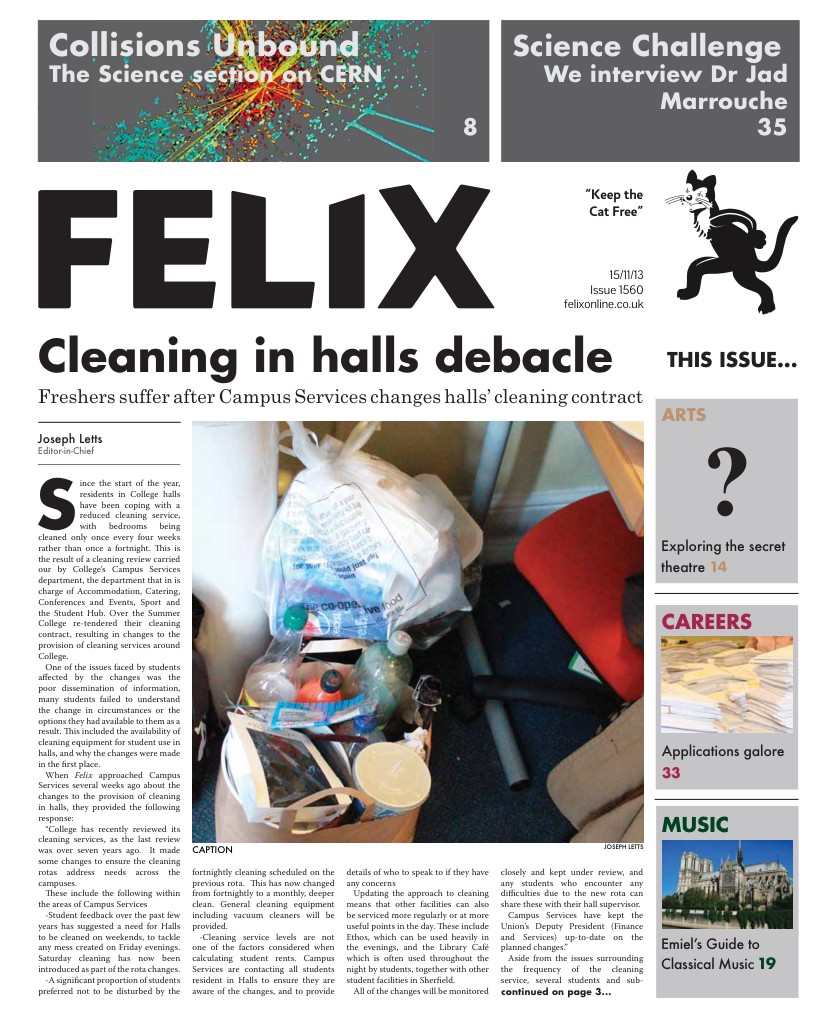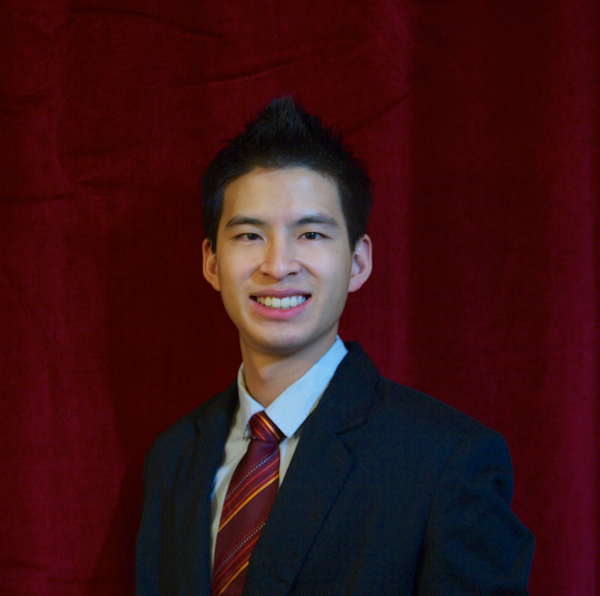RCSU’s Interview with Dr Jad Marrouche
RCSU’s annual Science Challenge is launching for this year on December 3rd. Previous years have included a tour of CERN as a prize for the overall winner. This tour of CERN was offered by past RCSU President & Science Challenge Chair Dr Jad Marrouche.
RCSU’s annual Science Challenge is launching for this year on December 3rd. Previous years have included a tour of CERN as a prize for the overall winner. This tour of CERN was offered by past RCSU President & Science Challenge Chair Dr Jad Marrouche. Dr Marrouche is the man responsible for founding the Science Challenge, as the first president of the newly-formed RCSU. In fact he was presented with an Outstanding Service Award in 2007 “for leading and effectively building a dynamic faculty Union.” He is currently a research associate with the Department of Physics based at CERN. He did his PhD there as part of the High Energy Physics Group. As a postgraduate student he received a Student Award for Outstanding Achievement in recognition of his outreach work. He is also the Deputy President of the Royal College of Science Association, the RCSU’s alumni organisation. Dr Marrouche is still involved with the Science Challenge and will be judging this year’s video entries. Fiona Hartley, RCSU Broadsheet editor, caught up with him in between seminars and meetings to ask him about the inception of the Science Challenge, as well as inquire as to how he secured his position at the world’s largest physics laboratory.
RCSU: How did you come to arrange the Science Challenge?
JM: The inspiration behind it was actually the centenary of College, and tying that in with the reformation of the Royal College of Science (RCS) as a union after it had been split into the natural sciences and physical sciences. I was lucky to be the first president of the reformed RCS so we wanted to make some sort of an event, if you like; some sort of a legacy that would be repeated and turned into a tradition. I think we managed to achieve that in the end.
It came about from that. John Sanderson was the president of the Royal College of Science Association at the time. He donated a thousand pounds of his own money to try to make the Science Challenge happen, the first time we tried it. We had a pilot year, the year before the RCSU became the RCSU again, and it was very successful.
After that, we decided to turn it into something big. So as opposed to just having Imperial students we opened the competition up to the schools around the whole nation. And because we had the College centenary we were able to get some sponsorship; this was before the credit crunch so there was a lot of sponsorship from various people.
So in the end the first year we held the Science Challenge coincided with three things: a celebration of the RCSU office, which we had campaigned hard to get – beforehand we didn’t have that space. There was also the celebration of the first year of the RCSU, as well as the centenary of the College.
We had a £10,000 prize I think. That was a huge prize. And we had the final in the Ritz. That was the single biggest cheque I’ve ever written. It was around £24500 for that evening, thereabouts. We had to get it signed off by the College.
But it was extremely successful. We had a huge waiting list for the tickets. The tickets were £20 and they sold out very, very quickly, within about twenty minutes of going on sale. The waiting list was longer than the actual number of tickets.
RCSU: How did you get Lord Robert Winston involved? Did he just see that it was happening and want to be involved, or…?
JM: It was basically because of the Head of Outreach at the time, Mel Thody. She knew him quite well, and when I approached her and said I wanted to expand the Science Challenge to schools, she asked me to speak with him. We arranged a meeting and he wanted to get on board with it. He’s a very famous figurehead and he’s now kind of the champion of the project.
RCSU: He definitely is. So, you graduated some time ago and you work at CERN now. How did you get there?
JM: I finished my undergraduate degree in physics in 2007. I then did a PhD with Imperial, based out at CERN, working on the CMS experiment. In the Large Hadron Collider experiment there are four main experiments: CMS, ATLAS, ALICE and LHCb. CMS and ATLAS are general-purpose detectors, in the sense that they are not looking for a specific signature but are able to reconstruct any signatures out there.
My PhD was effectively commissioning the algorithm for the CMS trigger system. That’s a speed camera, if you like. We’re not able to save every event that happens at the LHC, so we have to make a decision on which ones to save. The reason we have to do this is because the events that we’re interested in happen one in every ten million or ten billion times that there is a collision. So you need a high collision rate to see such events. But obviously you don’t want to save ten billion events to see one; you want to save a hundred to see one. So you need some sort of algorithm that will filter the events. That’s what I was involved in, in part.
RCSU: That’s pretty interesting. Finally, you’re the Deputy President of the Royal College of Science Association.
JM: Yeah. You know more about me than I do!
RCSU: Hardly! But can you tell us a little bit more about the RCSA?
JM: I don’t know if there’s that much to say about it because it’s not yet a fully-developed thing, it’s still also in its infancy, growing, like the RCS. It’s a relatively old organisation, yes, but it’s relatively new in some ways…
RCSU: Yes, I’ve noticed that the RCS has quite a lot of history, but obviously everything is somehow quite new these days because of the fact that it was all split up.
JM: Yes, exactly. Hopefully in the years to come the RCSA will become a much stronger alumni association. But the idea is that it gives graduates a link back to Imperial and to the RCS after they’ve left. It’s not as active as it could be, but I’m hopeful that within the next few years we will see its resurgence.






